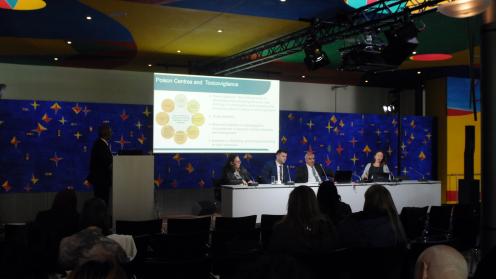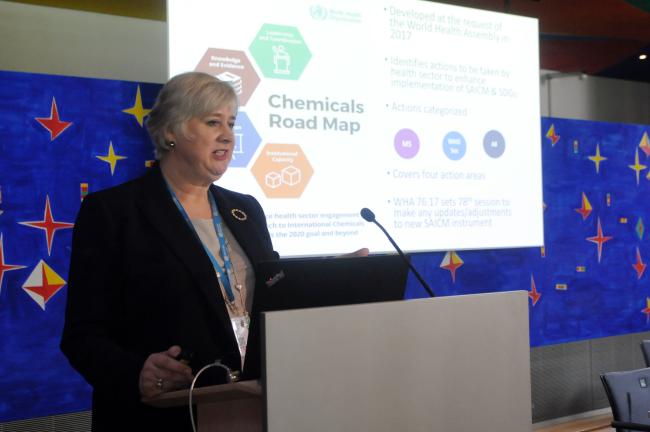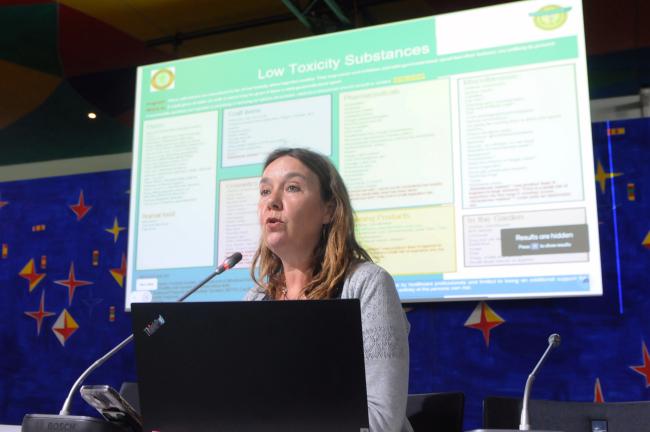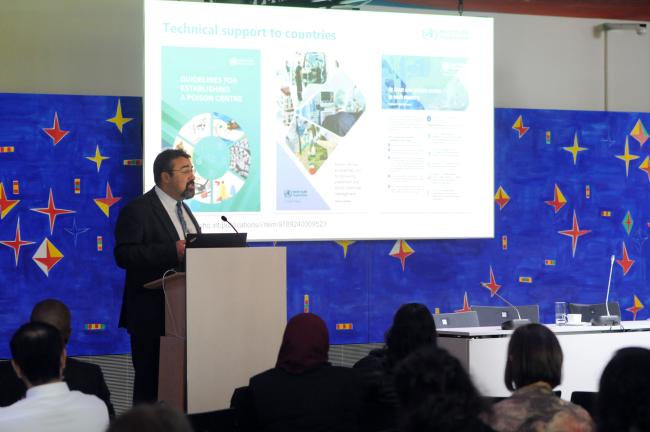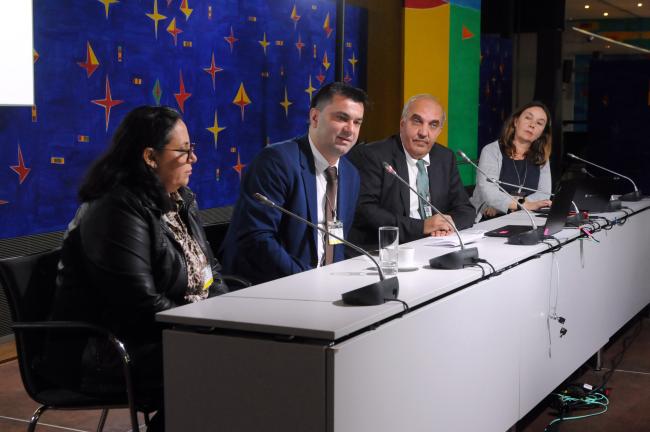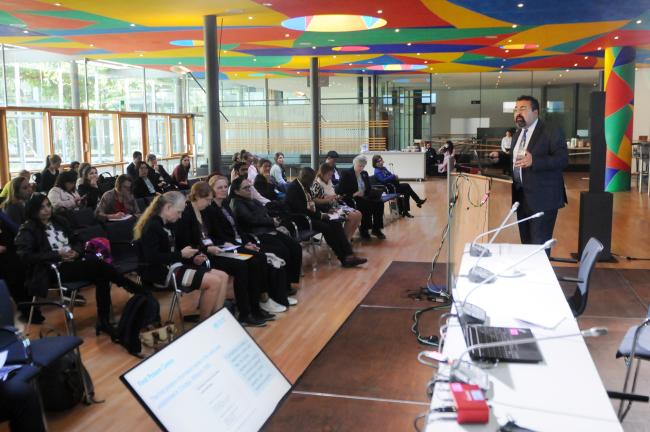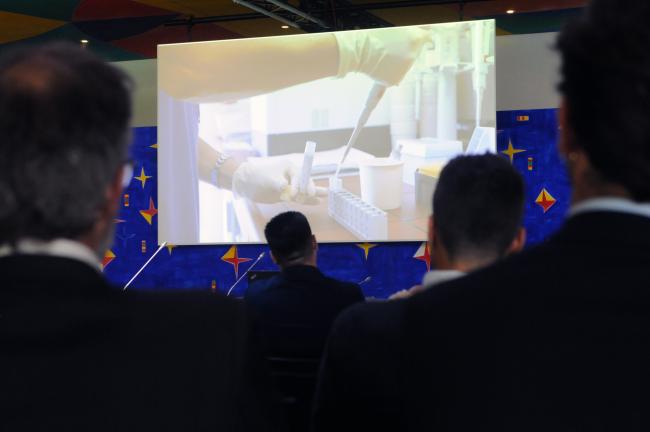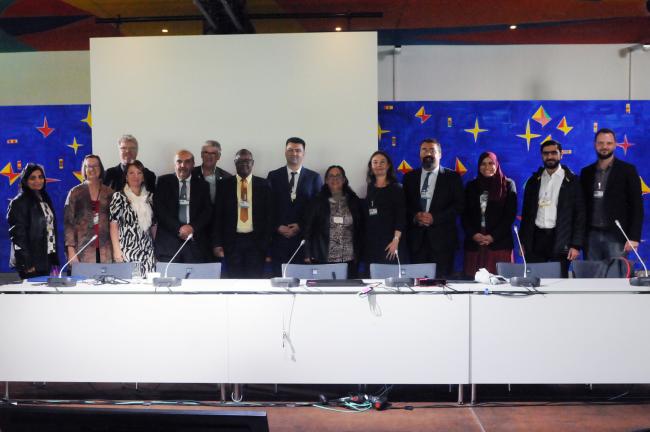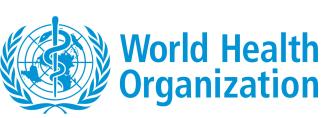About
Policymakers and experts shared the myriad of issues facing poison centers around the world while emphasizing their critical role in toxicovigilance and the anticipated framework for managing chemicals and wastes.
Guy Mbayo, WHO, and Lesley Onyon, WHO, hosted this session. Onyon welcomed participants, noting that poison control centers save lives and health sector costs. She reported that in 2017 the World Health Assembly adopted its Chemicals Roadmap identifying actions to enhance implementation of the Strategic Approach to International Chemicals Management (SAICM) and the Sustainable Development Goals (SDGs) in the health sector, through leadership and coordination, knowledge and evidence, risk reduction, and institutional capacity. She also mentioned adoption of Resolution 76.17 in May 2023 on updating the Roadmap to align with the new SAICM instrument, for adoption at its 78th Assembly in 2025.
She added that poison centers are integral to the Roadmap, by: enhancing toxicovigilance; identifying priority chemicals for national assessment and management, along with national indicators of progress for reducing chemicals’ burden of disease; establishing and strengthening International Health Regulations (IHR) core capacities; and ensuring all countries have access to at least one poison center. She noted that different countries are at different stages of developing poison center capacity.
Christiane Rohleder, State Secretary, Federal Ministry for the Environment, Nature Conservation, Nuclear Safety and Consumer Protection (BMUV), Germany, noting a new set of World Bank global guidelines on poisoning, called for coordination among a wide range of actors, including in the health sector. She cited the crucial need for poison centers protect public health and said SAICM’s momentum must be maintained after the fifth session of the International Conference on Chemicals Management (ICCM5). Noting the 2020 goal outlines the responsibility of individual actors to ensure ICCM5’s decisions are implemented, she urged participants to adopt and incorporate them into their work so they will become embedded in daily actions.
Raquel Duarte Davidson, UK, surveyed participants’ knowledge of the correct response to accidental silica gel ingestion, highlighting the need for poison centers, to save time and money when going to hospital is not necessary.
Panelists then saw a video describing the WHO’s role in helping countries establish poison centers, including through developing the WHO Guidelines for establishing a poison center.
Mark Lawrence Zammit, Ministry of Health, Malta, then gave the keynote speech on the importance of poison centers. He said the health sector is involved with chemicals throughout their lifecycle—extraction/mining, transport, storage, industrial processes, products/goods, and waste; therefore, it must work with all sectors to find concrete solutions. He cited three roles for poison centers:
- management when poisonings happen, through, for example, identifying poisoning agents and their treatment;
- management of public health in chemical emergencies and implementation of the WHO’s 2005 IHR, including timely detection and sharing of expertise and information; and
- contributing to chemicals management through building databases on chemical agents, mixtures, and products, including pesticides.
He said poison centers include units that work in different areas, such as information, clinical services, research, liaisons with other service providers, and public communication, noting responsibilities for advising governments and industry on chemicals management, building databases, risk assessment, and public information and emergency notifications, as well as education, networking, and awareness-raising.
He cited WHO technical support to countries that need assistance in establishing poison centers, including Poison Centres as Essential Units for Poisoning Prevention and Sound Chemicals Management: Technical Summary, and a summary for policymakers, At Least One Poison Centre in Each Country, both published in May 2023.
Mbayo then moderated a panel discussion on poison centers and sound chemicals management.
Igor Galić, Montenegro, noted that, in accordance with the requirement of establishing a national poison center to join the EU, Montenegro established a public health emergency center and two processes to respond to biological and chemical hazards. He noted that small countries need poison centers given chemical accidents from different sources and to protect their citizens’ health.
Duarte Davidson said toxicovigilance is broader than pharmacovigilance, and is the active process of identifying and evaluating the toxic risks existing in a community and evaluating measures taken to reduce or eliminate them. She cited the UK’s experience gathering data during COVID-19 to identify management methods and take appropriate action.
Mazen Malkawi, WHO Eastern Mediterranean Regional Office, said his region covers 700 million people in 22 diverse countries, but chemical exposure is a main source of public health emergencies in all. He said the IHR 2005 requires poison centers for timely detection of and effective response to potential chemical risks or public health emergency events, necessitating an adequately resourced poison center.
Maria-Innes Esquivel, Panama, spoke on poison centers and networks in Latin America and the Caribbean and new training opportunities created in Central America with the support of the Pan-American Health Organization, including chemical safety training, self-study training in pesticide poisoning, a new course in chemicals management in public health, and a Master’s degree program in toxicology in Panama.
By video, Christopher Kanema, Zambia Environmental Management Agency (ZEMA), reported on Zambia’s experience, including its participation in creating the regional 2008 Libreville Declaration on strengthening systems for health and environmental surveillance. He noted acute incidences of poisoning are a common, widely recognized, and increasing problem in Zambia, but that establishing a poison center under SAICM’s Quick Start Program has faced challenges in funding and stakeholder engagement.
Ensuing discussion focused on:
- new types of training on chemicals management;
- the need for poison centers even in countries that do not produce or export chemicals because of heavy use and exposure;
- the need to institutionalize exchange and cooperation among countries, particularly within regions;
- the importance of toxicovigilance for chemicals management to build up data over time, particularly across national borders;
- the need to measure long-term effects through surveillance and collaboration across sectors, such as through human biomonitoring;
- the interest of industries, such as Bayer, in sharing information to and from poison centers on products and reasons behind events, to understand and define mitigation measures;
- the need for political commitment to establish poison centers through assessments to make stronger cases for them, especially in emergencies;
- the fact that different countries have different types and risk of exposure;
- the usefulness of guidelines and other documents for implementation; and
- the benefits of Global Environment Facility (GEF) project funding for some countries in developing tools to analyze different countries’ situations with different chemicals.
Moderator Mbayo closed the session, encouraging participants to continue the discussions amongst themselves.
Organizers: WHO
Contact: Lesley Onyon onyonl@who.int
For more information: https://www.who.int/health-topics/chemical-safety#tab=tab_1
All ENB photos are free to use with attribution. For ICCM5 please use: Photo by IISD/ENB | Diego Noguera.
To receive free coverage of global environmental events delivered to your inbox, subscribe to the ENB Update newsletter.
